Visuarvivor!
Article - budget graphics cards face off head to head, but who will survive?
Following a hugely stringent application process, just four budget graphics cards made the grade [name one other in the same price category you would've included, you melodramatic plebeian? - Ed]. Now they must pit their wits against each other and battle it out for victory. Although there are rules to the battle, they are designed to guide the contestants on their journey and also to ensure their safety, rather than hindering their performance. Following these rules will help them prevail.
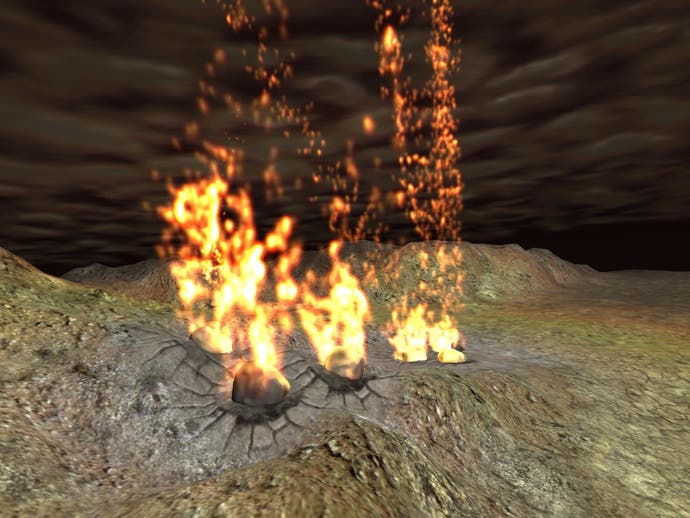
The Rules, then
On their journey to the island, none of the cards will be allowed to speak to one another. As they all use AGP slots and we haven't got a board with more than one of those, this shouldn't be too difficult. On arrival, they will all be separated by a suitable quantity of anti-static and set adrift on rafts. Each card will compete against one another in benchmarks. Based on the results of these challenges, our panel of expert judges will make their decisions as to who stays and who goes. When there are just two cards remaining, the two are pitted head to head against our panel as a package. Ultimately, with the results in, our expert panel will decide who becomes the ultimate Visuarvivor and who will become another item to prop up the couch-that-never-seems-quite-right. During the entire Visuarvivor period it is forbidden to conspire to share the market, enter the production PC or fail a benchmark. Our panel frowns upon such antics. Any acts of violence or threats of violence are prohibited, although that didn't stop NVIDIA. Each card will be tested in the same setup, a 1.33GHz Athlon with 256Mb of SDRAM running on an ABit KT7A-RAID motherboard. The operating system will be Windows 2000, running on a fast ATA100 IBM hard disk.
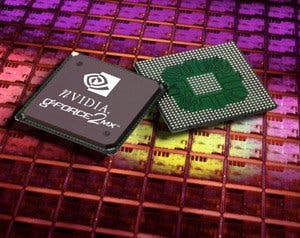
Arrival
The four contenders sloped up onto the beach, pulling the raft behind them. Although none of them had met before, the Gladiac 511 and Gladiac MX were actually related. The elder of the two, the Gladiac MX, features 32Mb of on-board SDRAM, with 256-bit 2D acceleration, and a 256-bit HyperTexel architecture including 32-bit Z and stencil buffers, optimised for DirectX 7. The Gladiac 511 on the other hand features 64Mb of SDRAM and a higher clock rate. Both cards have two NVIDIA Shading Rasterizer pipelines with per-pixel shading and a second generation T&L unit, and both cards also boast a 350MHz RAMDAC and support a number of filtering modes (e.g. anisotropic, full scene anti-aliasing modes and more, each with an associated performance boost or hit). The 511 also includes comprehensive DirectX 8 support, and should be capable of impressive DVD playback if it gets that far. With constant support and readily available drivers, both offer a lot of punch, and cost about £70 and £100 respectively. Initially, the Kyro II-based Vivid!XS caused some confusion amongst the others on the island, with its absurd use of an exclamation mark. With environment mapped bump mapping, 8-layer multi-texturing and pixel-perfect full scene anti-aliasing under its belt though, it didn't look too bothered about the competition. The reason for its smugness was PowerVR's technology - it's unique, combining tile-based rendering and deferred texturing to eliminate virtually every pixel that you don't need to see (overdraw). You may think ATI or even NVIDIA invented this, but as you'll find out, the Kyro II behaves very differently, and Imagination Technologies thinks it will be very hard to emulate without infringing patents. The Vivid!XS also improves visual quality and realism in any given scene thanks to its efficient Direct3D environment mapped bump mapping, which increases the realism of 3D rendered scenes by creating an illusion of depth on a surface. Of course, the usual filtering options of FSAA, anisotropic and more are available. The Vivid!XS is optimised for 32-bit colour, which some see as a chink in its armour (poor 16-bit performance), but by doing this creators ST reckon it can maintain the best possible image quality irrespective of the number of image layers or frame buffer bit-depth. Unlike traditional renderers, they say, systems using Internal True Colour such as the Kyro II only truncate or dither the data once, providing near 32-bit quality even in high-performance 16-bit modes. The most notable absence is an onboard T&L unit, but Imagination argue that doesn't matter in the long run. Only time, and the island, will tell. The Vivid!XS costs the same as the MX-400-based Gladiac 511, £100, and according to Imagination, will continue to match its price. Finally we have the ATI Radeon DDR. Something of a powerhouse amongst these cards, and definitely higher up the price scale - the Radeon retails at a bank-breaking £150, something our panel will take under serious consideration. But there's a lot to say for it. With 32Mb of DDR SDRAM, the Radeon GPU has little trouble storing all its data, and it certainly boasts the silliest component names of any of the cards on Visuarvivor, with its Charisma Engine and Pixel Tapestry technologies. It also embraces T&L as part of that, and uses some clever Z buffer trickery to try and elminate overdraw, similar to the Kyro II. Off the raft the Radeon DDR features strong DirectX 7 support, but with the aid of some new drivers it's capable of excellent DirectX 8 support. The only problem is, the drivers are in Beta! After mumbling with our panel, they were allowed in, but only on the basis that the Gladiac cards and Kyro II are tested with stock and beta drivers as well, so as not to gift any unfair advantages.
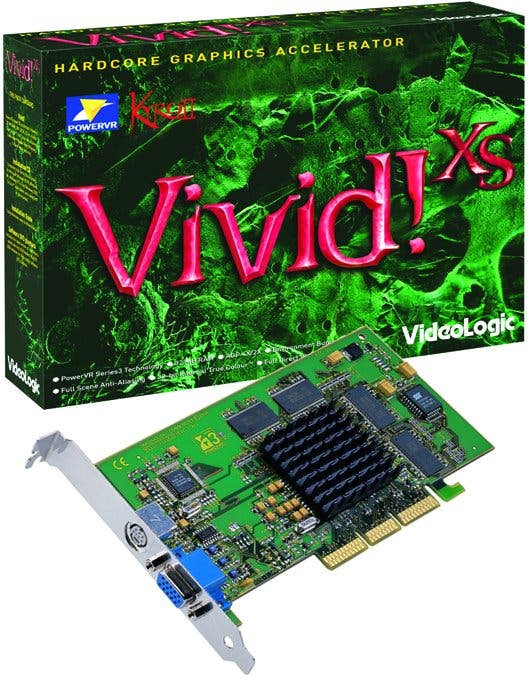
Week One - Settling in
It's all very well throwing the various cards at tests, our panel mused, but some of these are new releases, with new driver sets, and we'd like to see how they react with their surroundings on the island before expecting them to perform. The MX and Radeon are old timers by comparison to the Kyro II and MX-400 chipsets. Neither faltered all week, pacing around, performing adequately in day to day work and not once dropping off the pace, even with beta drivers. The MX-400 and the Kyro II though, by virtue of their infancy, were always to be a more interesting proposition. The first thing we spotted when we installed the Kyro II-based Vivid!XS was that it didn't take well to the heat. The island features a lot of bits and bobs that get very hot, and under the toiling sun of Windows 2000, we thought the card showed itself the worse for wear several times. It did demonstrate noteworthy performances in 3D Mark though. There is only one driver set for the Vivid!XS, so any problems had to be put up with... The MX-400, as we well expected it to, settled in very nicely. After pitching its tent on the beach, it plucked up the courage to have a run around in the sun, and even under the abnormal strains of the scorching Microsoft sun, it came out fine, outperforming its little brother the MX on several early, unrecorded benchmarks, and pacing alongside the Radeon at times.
Week Two - 3D Gaming
So onto the second week, and the first time the panel will select a loser. The tests will be tough, starting with the two 3D Marks, followed by Quake III. This is straight gaming. No FSAA, yet. Enduring 3D Mark 2000 and 2001 will be difficult for the contenders. Both offer strong tests of DirectX 7 and 8 capabilities. A lot of cards have failed to complete 2001 under beta drivers in warm ups, so our panel is watching those closely! The first hurdle was 3D Mark 2000.
The day's activities went well. Obviously 3D Gaming is a crucial part of the budget graphics card's make up, so all four cards were out to impress. The slightly lower scores seemed to fit with the cards that were using DirectX 8 optimized drivers. Impressively, the Vivid!XS stamped all over the cards with the closest price tags. Moving on to 3D Mark 2001, which is heavily DirectX 8 orientated would prove interesting. It's worth noting here by the way, that neither the Gladiac MX nor the Gladiac 511 were able to compete with the Radeon and Vivid!XS in the environmental bump-mapping test, because the MX GPU does not support it. Whoops.
3D Mark 2001 is a little more clear cut, with the Radeon rising to the head of the pack thanks to its impressive DirectX 8 optimized drivers, and the Vivid!XS following. Compared to the other cards though, the Radeon is always going be a bit of a heavyweight, and the panel have noted the shiny shoes of the more expensive card, and taken them into account. Again the Vivid!XS distinguishes itself. Neither of the MX-based cards can keep up, even using DirectX 8 optimized drivers!
Now, the first thing to note here is the incredible performance of the Kyro II-based Vivid!XS when pitted against its closest rival (in price terms), the Gladiac 511. Kicking sand in the eyes of its competitor the Gladiac 511, the Vivid!XS produces a score of some 35 frames more per second. This is down to the Internal True Colour of the Kyro II GPU, which as we stated at the outset, truncates or dithers the data once, providing quality while upholding speed. Our panel also noted that the Vivid!XS' performance in Quake III was the clearest. In other words, the visual quality was remarkable, with a vibrancy and definition missing from the MX-based boards and only half as evident on the Radeon. Speaking of the Radeon, that's a performance and a half. The panel feels however, that poorer visual quality and an unfavourably large price tag counts against it on several levels.

The Vote
Ultimately the panel was always going to boot out the card that couldn't hold up at the higher quality settings, because although on a budget, gamers do want quality as well as performance. The ageing Gladiac MX scored the lowest on the Quake III benchmarks, and even with the DirectX 8 optimized beta drivers, still had trouble keeping up with the pack on the other tests. As if this weren't enough, the panel also condemned the card as sporting the poorest visual quality of the lot. If you take that, its performance and its lack of TV/out or any other tertiary feature into account, you don't actually get a whole lot for your money. The Gladiac MX is ousted. Cast away onto a raft again, the other cards took turns to snipe at the Gladiac MX with their railguns.
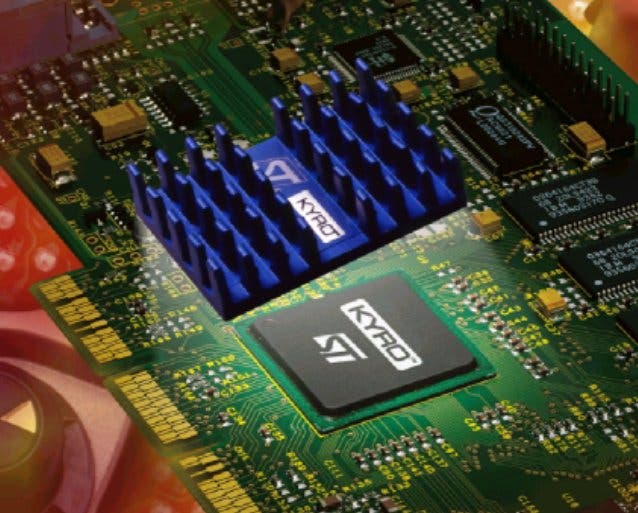
Week Three - FSAA
With the highest clock speed, most memory bandwidth and largest fill rate of any card on the island (thanks to its dual pixel pipelines and three textures per pixel), the Radeon felt it had every chance at coming out on top here. The card also felt its HyperZ technology would help it here, by conserving bandwidth and speeding up procedures. For the benefit of our panel, here's how HyperZ works. HyperZ is three separate techniques all applied in the same instant. Firstly you have Z compression, which deals with Z buffer data compression and decompression in real time, with no loss of detail. Next up is Fast Z clear, which flushes the contents of the Z buffer immediately that it is rendered, and lastly, the big one, Hierarchical Z. Hierarchical Z works in a similar manner to the Tile-based rendering of the Kyro II (more later), by only drawing what needs to be drawn. In any given 3D scene, the Radeon works out which pixels are occluded by those in front of them, and doesn't waste any bandwidth drawing them. Simple, yet effective. Like the Radeon though, the Kyro II-based Vivid!XS features a technology that eliminates overdraw. Already saving itself a hell of a lot of hassle by using an Internal True Colour engine that focuses entirely on 32-bit rendering, the Vivid!XS uses Tile-based Rendering too, something it developed itself and patented all over the shop with the original Kyro chip. TBR is a lot more refined (and some say less crude) way of eliminating overdraw compared to the Radeon. The card takes a frame, splits it into tiles and works through each one, eliminating pixels that do not need to be drawn before starting the rendering process. This helps in scenes where a lot of memory bandwidth is required - specifically in FSAA applications. Although some may doubt it, we reckon the Kyro II is a suitable card for running FSAA applications, even compared to the Radeon. Time will tell. The last card remaining, the Gladiac 511, is already looking a little tired. FSAA is a big stretch for any graphics card, and the scores given in the last week's events weren't terribly favourable. The MX-400 GPU features a similar clock speed to the Vivid!XS, but the Kyro II-based card is less about speed and more about technique, whereas NVIDIA cards have always been about performance through speed. Only with the GeForce 3 did the company really wise up to new techniques and approaches. As such, the MX-400 technology may well have difficulty. As we said, the actual test is a difficult one, and varies from card to card. The best test seems to be just putting images head to head and looking for blemishes. Since this is quite difficult (thanks to the lossy compression format of JPEG which we normally use for screenshots), here are the thoughts of our panel members on each image: Radeon: the two modes on offer are 2xFSAA and 4xFSAA. In 2xFSAA, performance in 800x600 with the detail bumped up is just about acceptable under Quake III and certainly under lesser games like Counter-Strike. In Giants we had to tone the detail down, but the effect of using slightly lower detail textures with FSAA was a little less than perfect. In 4xFSAA, it crawled under more or less everything. That said, 2xFSAA did look very nice. Most of the obvious jaggies were eliminated by the anti-aliasing, and the effect was a scene with a stronger definition. If only a little more speed were at its disposal… Gladiac 511: the options are once again 2xFSAA and 4xFSAA. Unfortunately, the strain of 2xFSAA is enough to ruin any appreciable increase in quality. The jerking is bad enough in 2x, but up it to 4x and you lose any semblance of playability. This is very unfortunate, because it means the Gladiac 511 is not really capable of FSAA under the circumstances it should be. In fairness to it, the visual quality of the stills is perfectly acceptable, if a little grainy (possibly thanks to all the sand that the Vivid!XS kicked in its teeth earlier), but we've moved beyond slideshow gaming now, our panel likes to think. Vivid!XS: the surprise performer, offering 2xFSAA and 4xFSAA options, and actually doing a good job of them. In 800x600, Quake III and Counter-Strike loaded fine, and the sunny deserted ruins of de_dust rendered beautifully in both options thanks to the Internal True Colour engine. The performance here presumably owes a lot to the Tile-based rendering.
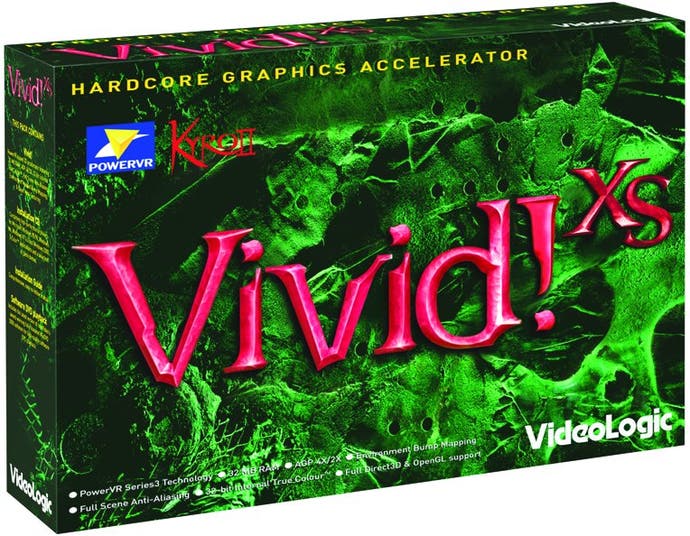
The Vote
With the games played and the options explored, our now sunburnt panel were anxious to get the judging out of the way, and as with the previous round, it was the card that performed the worst that took the brunt. The Gladiac 511 looked out of its depth. With a price tag identical to that of the Kyro II-based Vivid!XS, which outpaces it by a mile, despite its 64Mb of SDRAM and its TV/out, it fails. We need a card with features, pace and the ability to impress us visually. Two out of three ain't enough. So, in the now-time-honoured-fashion, the remaining two cards picked up the Gladiac 511, chucked it onto a raft and fired some grenades into the cool blue ocean surrounding it to see it on its way.
Week Four - Head to Head
With only two cards left, the result has to be decided based on which card offers the most bang per buck, and because the two cards are priced £50 apart from one another, that won't be as easy as simply comparing numbers. After dosing our panel up on margaritas, we asked them to choose. The winner, and ultimate Visuarvivor, is the Videologic Vivid!XS. The reasons for the Vivid!XS' triumph are legion. Although the 32Mb Radeon DDR puts up a valiant fight, the Vivid!XS is two third of the price of the Radeon, and under our strict benchmarks actually outpaced the Radeon once or twice. It certainly has the jump on the now redundant GeForce 2 GTS, which although still on the market, has little or no share to cling on to. The technology used in the Vivid!XS also caught the eye of our panel. Apart from the abundantly aforementioned Tile-based rendering, the Kyro II GPU is based around an Internal True Colour engine, which is actually capable of sustaining a decent frame rate while using Full Scene Anti Aliasing. And apart from that, the Internal True Colour contributes to what is the most impressive visual quality (in 2D and 3D) of any card on the island. If you kick sand up in its face, it'll show you every grain, and will they be pixellated? Will they heck. Pricing is always an issue here too, and according to our contacts at Imagination Technologies, wherever NVIDIA moves price-wise with the MX-400 based cards, it will follow. Given the huge and impressive performance gap between the two, we have no qualms about recommending the Vivid!XS over the MX line any day. Now, going back to its closest rival, it's fair to say that the Radeon does offer one or two things that the Vivid!XS does not. Software DVD playback on the Vivid!XS is fair enough with a beefy processor, but the Radeon has the technology built in to take the burden off the CPU, and does it admirably. If you're big on DVDs but short on cash, you might want to consider your options here. That said, the Radeon has its own issues that are not reflected in the Vivid!XS. Things like the inability to deal with fog and other effects in OpenGL, something that has irritated some Counter-Strike users in the past and necessitated the application of archaic sprite settings and such. Although this only affects some configurations, it's a problem the Vivid!XS doesn't suffer from. The only question our panel felt was left unanswered once the cards had packed up and left the island was that of drivers. When the card was dumped overboard a month ago the driver set was dated early May, but the occasional niggle (such as relatively poor visual performance in some of the 3DMark 2001 tests) kept us guessing. Thankfully FPS stalwarts like Quake III and Counter-Strike, which dominate the online arena, are fine. Even newcomer Tribes 2 didn't prove too much of a burden for the little Vivid!XS. The other thing about the drivers is frequency of updates. Although they are unsupported, Radeon owners receive new drivers regularly, and they often provide a performance boost. The drivers for the Vivid!XS are being updated constantly, but there is a question mark over availability at this point. With any new technology comes a learning curve - the Kyro II will be no different. What most impresses us about the technology though is its applications in the here and now. The GeForce 3, the highest point on the graphics curve, features so much functionality that has little or no use in current games that we're at pains to recommend it. The Kyro II by comparison, applies clever new techniques to gain performance without the unnecessary expense of things like the nfiniteFX engine. Given that, old timers might just find the Vivid!XS fills the hole in the graphics market worthily. Ah, time for a tequila sunrise and a bag of kettle chips. Tune in next time, for another series of Visuarvivor.

